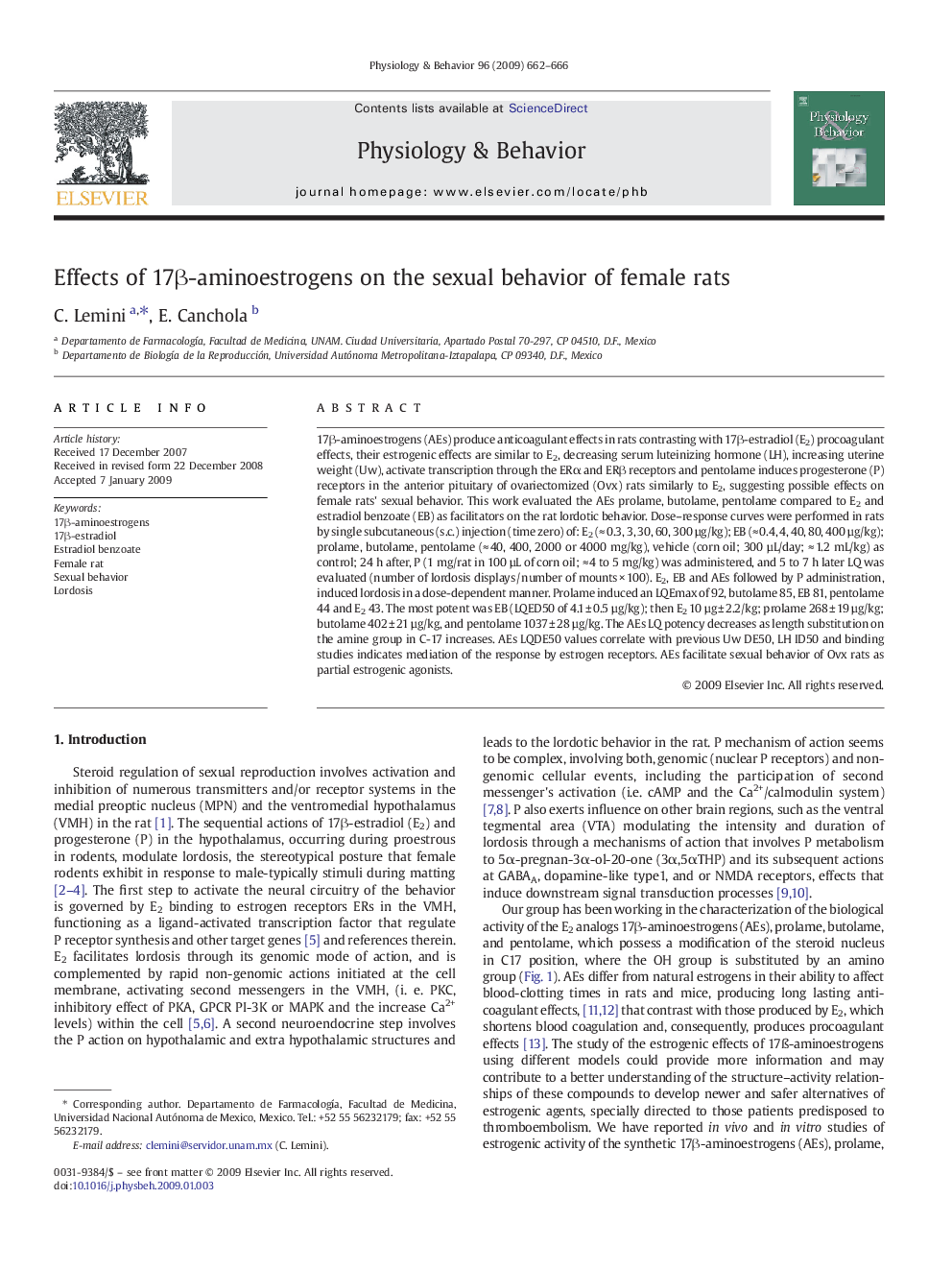| Article ID | Journal | Published Year | Pages | File Type |
|---|---|---|---|---|
| 2845506 | Physiology & Behavior | 2009 | 5 Pages |
17β-aminoestrogens (AEs) produce anticoagulant effects in rats contrasting with 17β-estradiol (E2) procoagulant effects, their estrogenic effects are similar to E2, decreasing serum luteinizing hormone (LH), increasing uterine weight (Uw), activate transcription through the ERα and ERβ receptors and pentolame induces progesterone (P) receptors in the anterior pituitary of ovariectomized (Ovx) rats similarly to E2, suggesting possible effects on female rats' sexual behavior. This work evaluated the AEs prolame, butolame, pentolame compared to E2 and estradiol benzoate (EB) as facilitators on the rat lordotic behavior. Dose–response curves were performed in rats by single subcutaneous (s.c.) injection (time zero) of: E2 (≈ 0.3, 3, 30, 60, 300 µg/kg); EB (≈ 0.4, 4, 40, 80, 400 µg/kg); prolame, butolame, pentolame (≈ 40, 400, 2000 or 4000 mg/kg), vehicle (corn oil; 300 µL/day; ≈ 1.2 mL/kg) as control; 24 h after, P (1 mg/rat in 100 µL of corn oil; ≈ 4 to 5 mg/kg) was administered, and 5 to 7 h later LQ was evaluated (number of lordosis displays / number of mounts × 100). E2, EB and AEs followed by P administration, induced lordosis in a dose-dependent manner. Prolame induced an LQEmax of 92, butolame 85, EB 81, pentolame 44 and E2 43. The most potent was EB (LQED50 of 4.1 ± 0.5 µg/kg); then E2 10 µg ± 2.2/kg; prolame 268 ± 19 µg/kg; butolame 402 ± 21 µg/kg, and pentolame 1037 ± 28 µg/kg. The AEs LQ potency decreases as length substitution on the amine group in C-17 increases. AEs LQDE50 values correlate with previous Uw DE50, LH ID50 and binding studies indicates mediation of the response by estrogen receptors. AEs facilitate sexual behavior of Ovx rats as partial estrogenic agonists.
